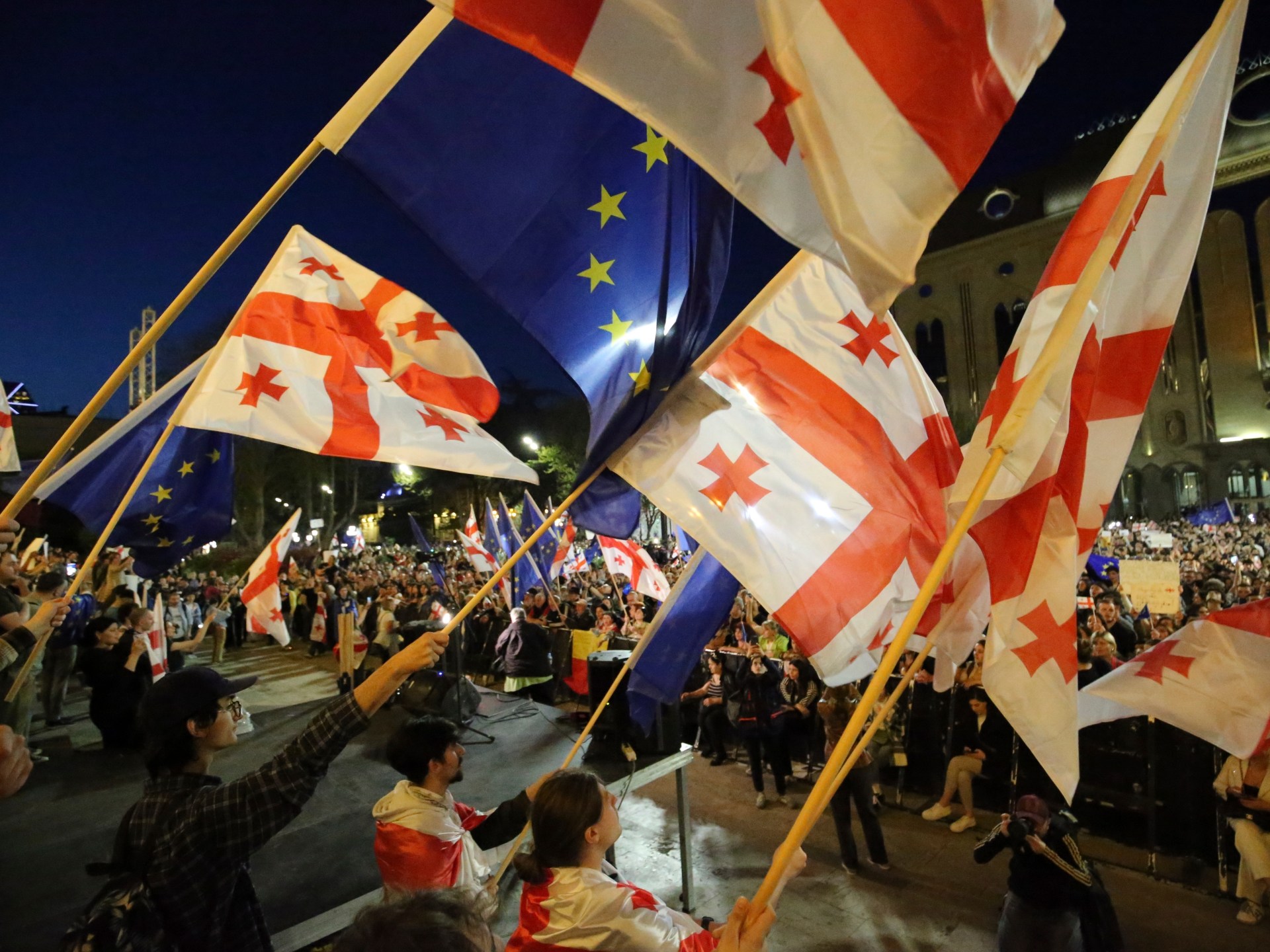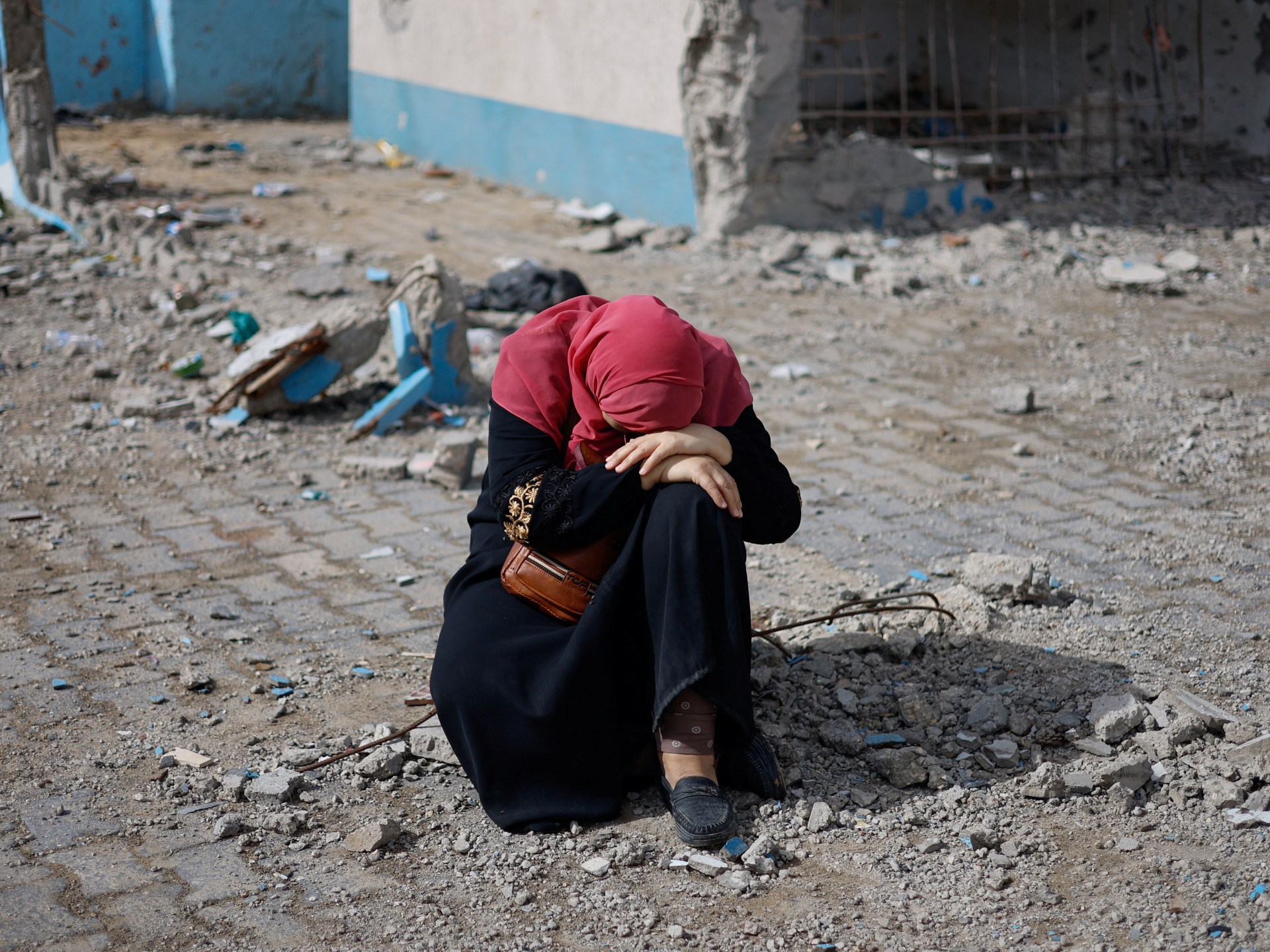Russia lashes out against ‘terrorist’ incursion in Kursk, pulls back planes | Russia-Ukraine war News
Ukraine’s deep strikes against Russian military targets and its three-week-old ground offensive inside Russian territory have appeared to be yielding military and political results during the past week.
Russia was reported to be moving its aircraft back from airfields near the Ukrainian border while glide bomb attacks inside Ukraine were reported to have decreased. Evidence that Moscow was scrambling elite units from Ukraine to defend home turf also mounted during the week.
An unnamed White House official told the Politico news website that “90 percent of the planes that launch glide bombs” against Ukrainian front-line positions had been moved back inside Russia.
The independent analysis website Frontelligence agreed that “between the second half of June and mid-July, Russian forces relocated many valuable assets away from the Ukrainian border,” including planes and helicopters.
Ukrainian Colonel Vitaly Sarantsev told a joint news telethon broadcast by Ukrainian channels that the Kursk offensive had greatly reduced Russia’s use of aviation against northeastern Ukraine.
“We felt relief in tactical aviation,” he said on Sunday. “The enemy has significantly reduced its use in our direction. If in previous periods we had 30 to 50 antiaircraft missiles per day only [in the Sumy region], then yesterday the enemy used air strikes twice, using four antiaircraft missiles and 11 unguided air missiles.”
Units operating in hotly contested Chasiv Yar in the eastern region of Donetsk have also reported a drop in glide bombs this month.
Vadym Mysnyk, a spokesman for the Siversk tactical group, said: “It is a sign that we are thinning out their air force and hitting airfields, and we have pushed the enemy away from the border a little.”

No effect on the Pokrovsk front
There was also increasing evidence that Moscow was having trouble stopping the Ukrainian counterinvasion in Kursk and was increasingly tapping elite units to do so.
Russian military reporters and geolocated footage have revealed that elements of the 810th and 155th naval infantry brigades, the 11th Airborne Brigade, and the 51st and 56th airborne regiments were redeployed to fight in Kursk.
The 810th and 155th naval infantry brigades had been fighting in Kharkiv, where Russia launched a new incursion in May. The 51st Airborne Regiment had been fighting in Siversk, and the 11th Airborne Brigade was in Chasiv Yar, both in Ukraine’s Donetsk region.

Estimates of how many soldiers Moscow has diverted from Ukraine vary. Ukrainian Commander-in-Chief Oleksandr Syrskii estimated it was in the region of 30,000. If so, that would be a significant proportion of the more than 700,000 soldiers Russia is estimated to have in Ukraine.
The Washington, DC-based Institute for the Study of War (ISW), a think tank, estimated that Russia would need 60,000 soldiers to win back territory in Kursk once Ukrainian defences were dug. London’s International Institute for Strategic Studies agreed with that figure.
But Russia has refused to let up on its priority offensive towards the city of Pokrovsk in Donetsk, where roughly a third of its daily assaults have taken place. Here, it has progressed by at least 2km (1.2 miles) in the past week, advancing through the settlements of Hrodivka and Novohrodivka.
Since taking Avdiivka in February, Russian troops have advanced 34km (21 miles) westwards, forming a salient that is now within 12km (7.5 miles) of Pokrovsk. Sarantsev admitted that the Kursk action had had no effect on the Pokrovsk front.

An ‘insane and suicidal escapade’
Western analysts have offered differing explanations for the Kursk offensive – including the diversion of Russian troops and a psychological reset through seizing the initiative. Ukrainian President Volodymyr Zelenskyy last week said it was a preemptive defence to prevent another Kharkiv-type invasion in the north.
But he also told Ukrainians it was “a way to compensate for the deficit in long-range capabilities”.
For months, Zelenskyy has implored the United States to allow Ukraine to use the ATACMS long-range rocket artillery it provides to strike airfields deep inside Russia. He also wants the US to release Britain and France, for whose Storm Shadow missiles the US provides components, to authorise their use in the same way.
Currently, the US allows Ukraine to use its weapons to counter battery fire within a limited range across the border but not to hit Russian airfields because it is afraid that this could draw the US into the war.

In a recent analysis, the ISW identified that “at least 209 of 245 (more than 85 percent) known Russian military objects in range of ATACMS are not air bases” but ammunition depots, communications centres, army bases and command centres.
White House national security spokesman John Kirby told reporters on Monday that restrictions on the use of long-range weapons remain in place but “we’ll keep the conversations with the Ukrainians going” to potentially revise them.
The European Commission, which does not command military assets, has openly supported a lifting of restrictions.
The European Union’s top diplomat, Josep Borrell, repeated that support on Monday and Thursday. “I reiterate that lifting restrictions on the use of capabilities against the Russian military involved in aggression against Ukraine, in accordance with international law, would strengthen Ukrainian self-defence, save lives and reduce destruction in Ukraine,” he said on Monday.
Russian officials bared their teeth against any such decision and hit out against the fact that both Brussels and Washington have allowed the use of US and European equipment in Ukraine’s Kursk offensive.
“The West does not want to avoid escalation. The West is asking for trouble,” Russian Foreign Minister Sergey Lavrov said at a news conference in Moscow on Tuesday.
“The impression is that our colleagues [in Washington] have discarded the remnants of common sense and believe that they can do anything,” Deputy Foreign Minister Sergei Ryabkov said.
Russian Ministry of Foreign Affairs spokesperson Maria Zakharova said unleashing long-range missiles, such as the Storm Shadow provided by Britain and France or the ATACMS provided by the US, on Russia would be about “turning the Kyiv regime into a terrorist organisation”. She called Ukraine’s offensive in Kursk an “insane and suicidal escapade”.
Facts on the ground suggest otherwise. Syrskii said Ukraine had occupied 1,294sq km (500sq miles) in three weeks and taken control of 100 settlements, and although in the past week the Ukrainian advance has slowed, Russia hasn’t managed to take any of its territory back.

Zelenskyy doesn’t want permission just to strike Russia with Western weapons. He also wants to bind EU allies closer in a joint air defence, a defensive measure that wouldn’t provoke Russia, he said, and has already been implemented in protecting Israel from a massive Iranian missile and drone attack on April 13-14.
After Russia fired 127 missiles and launched 109 Shahed drones into Ukraine on Monday, one of its largest ever aerial attacks targeting energy and civilian infrastructure, Zelenskyy said: “We must finally come to the joint shooting-down of Russian missiles and drones. … If such unity has apparently worked effectively in the Middle East, it should work in Europe as well. Life has the same value everywhere.”
Zelenskyy said he had discussed such a joint aerial defence with Lithuanian Prime Minister Ingrid Shimonite and Polish President Andrej Duda in Kyiv on August 24.

Taking the fight to Russia
While Ukraine seeks expanded authority and cooperation from its allies, it is also going its own way. During the past week, it used domestically built drones to strike oil depots and ammunition warehouses.
It also unveiled a new domestically developed weapon on Saturday – the Palyanytsia, a massive, long-range rocket-drone that may have been responsible for the destruction of a Russian ammunition warehouse in Voronezh on Friday.
The Palyanytsia has a rocket engine and wings and resembles a cross between a missile and a gliding drone. Zelenskyy did not give its exact range but said two dozen Russian airfields lie within it. A video Ukraine released showed airfields as far as Savasleika, 650km (400 miles) from the Ukrainian border, and Engels, 700km (435 miles) from free Ukraine.
Zelenskyy explained the Palyanytsia’s purpose as being “to destroy the offensive potential of the enemy” – likely a reference to the glide bombs Russia has been launching on its aircraft.
Last year, Ukraine set itself a task in 2024 of building domestically 1 million short-range FPV (first-person view) drones, 10,000 medium-range drones and 1,000 drones capable of flying more than 1,000km (620 miles). The Palyanytsia appears to fall in the middle category.
On Tuesday, Zelenskyy said Ukraine had also successfully tested its first ballistic missile. Before Russia’s invasion of Ukraine, Saudi Arabia had contracted Ukraine to design and build the Hrim-2, a 450km (280-mile), short-range ballistic missile. It is believed prototypes of this missile may have been used against Russian-occupied Crimea in August 2023 to destroy two S-400 air defence systems. Russia’s official TASS news agency said the Hrim-2’s range has been expanded to 700km (435 miles) and possibly 1,000km (620 miles).
Check out our Latest News and Follow us at Facebook
Original Source






